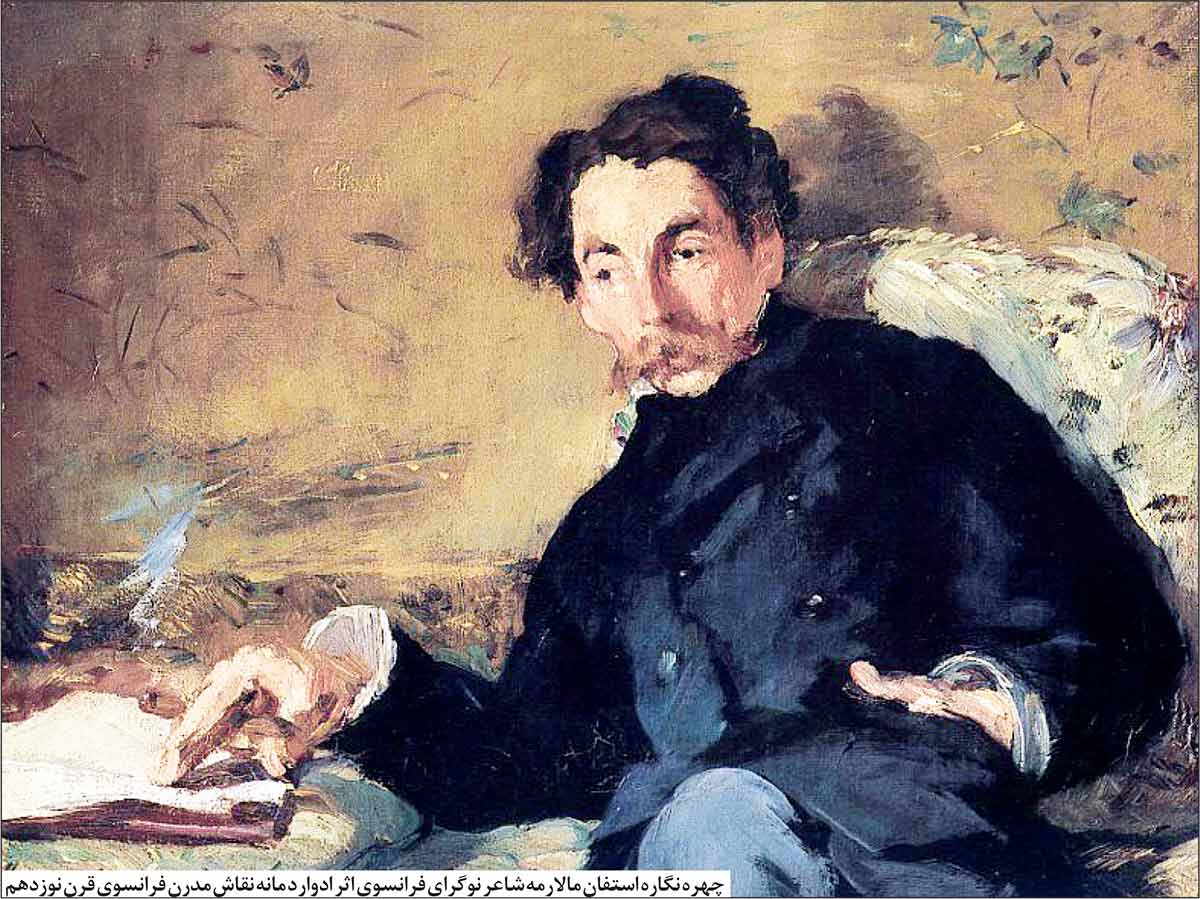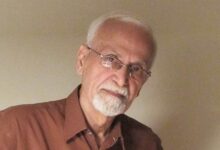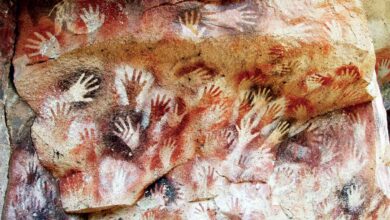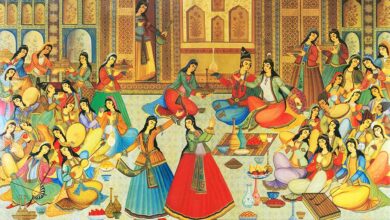Modernity, stagnation or continuity?

Alireza Karimi Saremi: Modernity began in an era when the world was thirsty for a huge transformation, wanting a free world and far from any ambiguity. This historical rupture marked a huge survey, to build a new world. During these ups and downs, a tremendous change in thinking took place, the effects of which have remained to this day. But a question arises: is modernity still the leader in today’s world?
At the beginning of writing this article, in order to reach the goal, I found it necessary to mention the history of the world and its origin, and then to review the opinions of some of the great thinkers of the world in this regard.
Not long ago, about 3.8 billion years ago, on the planet Earth, certain molecules were combined to form huge and complex compounds called living organisms, and this was the beginning of life. “At that time, there was no human on the planet, nor was there any tidings of human existence.
At the end of the third age, a miracle happened, billions of different life forms gathered and scattered each other, without gaining dominance and superiority over each other, so that a fundamental transformation took place. But the head of man’s actions appeared, he showed his intelligence and awareness in thousands of ways, and science was created, expanded itself, and took the end of the world in his hands in a way that is very praiseworthy.”[1]
It should be noted that the last common ancestors of humans and chimpanzees lived six million years ago, and the evolution of humans in Africa and the creation of the first stone tools took place in 2.5 million years ago.
Two million years ago, humans migrated from Africa to Eurasia [2], to go through the course of evolution. Then, 500,000 years ago, Neanderthals evolved in the Middle East and Europe, and from 300,000 years ago, humans learned to use fire. Then 200,000 years ago, the wise man evolved in East Africa, and 70,000 years ago, beings of the “Wise Man” species started creating more complex structures called culture.
The cognitive revolution, with the emergence of language and the expression of imaginations, promised the beginning of history, and that is the time when the wise man came out of Africa and spread over the earth.[3] This evolution continues, until now after When humans step on the surface of the moon, we should expect the presence of human-made superhumans instead of wise humans.
It may be a little strange to present this part of the history of the creation of the world in the beginning of this article, but it was necessary to examine the history of the creation of human intellectual evolution as an undeniable process in evolution because civilization begins and By establishing social order, a situation is provided for cultural and artistic creativity to emerge. It should be mentioned that the emergence of civilization is possible when chaos and insecurity have ended, so that a wise man without fear can strive to create a comfortable life in the way of acquiring knowledge and knowledge.
He learned that based on intellect and knowledge, in order to achieve virtue, he must have decency and education, which was education. In this regard, Will Durant says: “Man became aware of the importance of education because education is a means that transfers civility from one generation to another.”[4]
In this evolutionary process, early humans were promoted to civilized humans who were indeed “calligrapher visionaries”. This leading man, with an indescribable speed, took great steps to build a different world; As from the end of the 15th century onwards, it created fundamental changes in the field of science and caused the scientific movement to move forward at a very fast pace. With this great leap, many inventions and discoveries appeared and the stars of knowledge rose.
At that time, due to the invention of the printing press, the publication of books and treatises became very fast and easy, and the seekers of knowledge were relieved. These great changes were called the renaissance period of science, literature and art. [5]
The Renaissance was a big and centuries-old development that started in Italy. After that, the industrial revolution, another one of the biggest transformations in human history, occurred in England between 1760 and 1840 AD, and since then, during the past centuries, man always sought innovation and creativity and tried to come up with inventions. to make life easier, so that he can have a better world. “Therefore, in the 17th and 18th centuries AD, which is known as the new centuries and the era of science and reason and the era of new ideas, people appeared whose innovation and scientific revolution and their scientific and philosophical explorations led to the creation of It became the “paradigm of modernity” which finally brought the European Enlightenment and Enlightenment movement. [6]
But here a question arises, what is modernity and what are the differences with modernism? Various definitions have been provided in this regard. Although, according to Babak Ahmadi, in the book “The Enigma of Modernity”, so far no one has been able to provide a final, complete, definitive and authentic definition of the word modern and the concepts that come with it, such as modernity. But perhaps it is possible to consider modernity as a way to live a new life and renew old traditions and beliefs among nations in the present time, and modernism as the meaning of modernization and the development of new and modern thoughts to throw away old and rotten thoughts, and in a more complete expression, it should be said Modernism is the external form of modernity and modernity is the identity and spirit of modernism.
However, on the endless road of philosophy, the thought and intellectual process of the great modernity has prompted others to consider the term modern from the past to the present day, but part of the society uses this word in their daily conversations with this theme. They use: “something new and modern that has been placed in place of something old that is no longer acceptable”.
According to a number of theorists of social sciences, the legitimacy of modernity or modernity comes from confronting traditions. The concept of today’s confrontation with the past, or the juxtaposition of new phenomena with old affairs and traditions, goes back to the 16th century.
The issue of new and old confrontation has existed in every era of history in some form and to some extent, and in inevitable cases, its meaning has been taken into consideration. Even in societies whose culture and cultural characteristics have had the least changes and ups and downs according to the knowledge of researchers, historians and researchers, one can find the opposition of new and old and the praise of newness and up-to-dateness.
In our time, every religion, ritual, theory and belief is proud of its novelty and by proving this logic that has replaced an old and obsolete idea, it proves its existence.
With such a background, the word modern entered English and German from the French language, and words such as modernist and modernized in the 18th century (in the works of the Enlightenment) and the word modernity in the 19th century appeared gradually. In the meantime, in the field of literature, famous writers such as Chateaubriand [7] in 1849, in his memoirs from beyond the grave, used the word modernity (probably for the first time), meaning “the newness of social issues with which we dream”. This term was not used much, until

at the end of 1863, Charles Baudelaire[8] proposed a more precise meaning of it. He says: Being modern means understanding the fact that things from the old life are left in the new life and we have to fight with them. But the word modernity that Chateaubriand used was rooted in a romantic concept. The romantics raised the issue that “we must belong to our time”.
Giovanni Bershe[9] and a number of his like-minded people in Milan wrote in 1817 that “the artist must be modern” and being modern is his responsibility and duty. In 1818, Gian Domenico Ramanuzzi[10] announced that “be a child of your time”.[11]
At this time, after the emergence of the Enlightenment movement in Europe, schools, styles and literary and artistic movements underwent a dramatic transformation and expressed new opinions based on the changes made in the political, social, cultural and artistic system of their time. For example, the year 1863 has been considered as the starting point of modern art, and the impressionism style has been regarded as the beginning of modern or new arts around the mentioned year.[12] A few years later, that is, around 1870, a group of young artists around Edward Manet, the painter, gathered and in 1873, they established the “Limited Liability Company of Painters, Sculptors and Printers”.[13] Perhaps this important move caused many artists to work more widely and freely instead of producing works of art for their previous clients in the last decade of the 18th century. Because at that time, the royal academies in Paris, London and other big European cities were setting up big exhibitions where only the members of the academies could participate in that big artistic event.
After the French Revolution, art education and art economics gradually took a democratic form. At that time, the French Legislature opened the exhibition of works to all artists, and after that the authority of the Academy was reduced. This caused, according to the developments, a deep gap between the official art intended by the academy and the artists who had established new ideals. Although the works of these modern artists were not recognized at the beginning and all the exhibitions refused to show their works, but a few respected these works and bought their works to support them. From that time, the basic characteristic of Art Modernism was born.
In this way, the artist assumed the role of interpreter, the same task that the priest was no longer able to fulfill. The artists of that time, with the help of getting a new and modern look in the way of creating their works of art, were aware of new horizons and artistic skills before the past. After some time, the French revolutionary government established the Public Museum or “Republic Museum” according to the resulting approach. In 1793, the Louvre Museum was opened and all the royal works of art were moved there. Now, all those interested in art have access to these works, and the possibility of examining and studying the works of art masters was also provided. It was a place to cultivate talents, which scientific and technological developments opened previously unknown and impossible territories to the collective consciousness and discredited the previously accepted criteria.
“These developments in art, at the end of the 19th century, assigned an important role to photography, which had proven its capabilities. The vast experience, skill and effort that had until then been necessary to accurately simulate reality were reduced to a few technical hand movements. It is as if the work of art as a whole was deprived of its function and representative meaning.”[14]
Now, due to the freedom of art and the created space, in order to make fundamental changes in the perspective of modern artists, the art of order is freed from the captivity of the royal palaces. In search of finding his inner self, the artist explores the intellectual layers of the world and looks for a new format for a new expression. Therefore, the artist frees himself from tradition and superstitions and frees himself from classical and academic art in order to reach a new discourse. In this course of discourse, which owes its foundation to the developments of the second half of the 19th century in philosophy, science and technology, economics, politics and social relations, what to say and how to say it should be new. In the course of freedom, the modern artist frees himself from political and church affiliations and tries to express his intellectual capabilities. Therefore, one of the most important features of modern art was exploration into cultural and civilization fields outside of Western culture and civilization. The Paris International Exhibition was held in 1867 and many prints of Japanese prints were exhibited, and the word Japonism for the aesthetics of Japan attracted the attention of Paris art societies; Therefore, one of the important and influential sources in the eyes of impressionists of France, America and other countries, at the beginning of their activity, was the painting and printing of Japanese patterns. In this regard, we can mention the influence of non-western culture by the French painter, Paul Gauguin, on the life and culture of the inhabitants of Tahiti in Africa. In such a way that in the 20th century, famous artists such as Pablo Picasso[15] and Henri Matisse[16], inspired by African faces and sculptures and the culture of the world’s lesser-known ethnic groups, reached their own artistic language and expression.[17] In this way, it can be said that modernist artists experienced changes in their thinking, using color and form in the manifestation of new art.
Thus, with the beginning of modernity, other unprecedented experiences in art began. In painting, from the realism of Gustave Courbet[18] and the impressionism of Claude Monet[19] to the abstract expressionism of Jackson Pollock[20]; In literature, abandoning the objective narrative in the works of Virginia Woolf[21] and James Joyce[22] and giving an example to the subject in the works of Ernest Hemingway[23]; In music, the unbalanced sounds of Arnold Schoenberg [24] and Alban Berg [25] and the themeless and disorderly construction of Igor Stravinsky [26], in architectural works, the modernism of Le Corbusier [27], Ludwig Mieswan der Rohe [28] and Walter Gropius [29] ] has played a very important role.[30]
It is worth noting that the term modern is used in a part of the history of philosophy that began with Descartes and continues to this day, although the authors or researchers of different sciences may mean a different meaning by using the term modern, in In fact, it can be said that every writer has his own special expression of this word in mind. For example, the use of the word modern in other sciences, especially medicine, is completely different from literature and art, because what is modern and contemporary for an artist is not up-to-date and new for a doctor or a scientist, because different sciences, They are always in the process of renovation and progress, and the achievement that was considered modern in the last decade in medical sciences is now outdated. Therefore, it can be said that the word “modern” has its meaning in the context in which it is used, even paying attention to the historical background does not enlighten its meaning.[31] The word modernity in contrast with the past and tradition has caused many questions in the minds of those interested.
Babak Ahmadi, in his book The Mystery of Modernity, raises another question: can it be said that, due to the progress of human knowledge, today’s people are in such a position that they no longer need their old intellectual traditions? In response to this question, some experts believe that ancient civilizations and the ancient culture of nations are like the childhood of man and the modern era, as the days of physical and intellectual maturity of man. But the opinion of Bernard Chartres, [32] which was repeated by John Salisbury, [33] the writer of the twelfth century, in the debate between the antiquarians and the moderns, said that we moderns are like dwarfs standing on the shoulders of giants, i.e. elders. Ancient cultures stand, and so we see a vision, wider than the giants themselves see. Even if we consider the creators of ancient culture to be greater than the creators of today’s culture, we cannot deny that today’s people benefit from all their knowledge and insight and add something to it, even a little.[34]
What seems to be modernity is rotating in a series of cycles; Because from the beginning until now, it is still moving.

It may be possible to conclude from the theory of some experts, including Paul Duman, the Belgian-American literary critic who said: “Modernity is necessarily the new against the old and the present against the past”, that what is new today is always new. Tomorrow will be old and old, so the world and thought are continuously becoming old and new.
Now, how can we say that the era of modernity is over if the ideas of the past, which were considered modern in their time, are considered old after a few days, and certainly the modern ideas of today will also be old tomorrow.
With all these interpretations, it must be acknowledged that modernity started in the western world and had many fruits for them; Although there are many contradictions in the presented theories, modernity transformed the western world. Although other countries also benefited from modernity as much as their level of connection with the western world, some internal factors in those countries tried to develop superstition for their own interests, to keep their nation in a traditional and old context.
Of course, modernity should be evaluated from both positive and negative aspects, but what is very important is the discussion of individual freedom and democracy in modernity. Therefore, modernity cannot be denied, because thinking cannot be hidden. A thinking society is always looking for innovation in its thoughts and life, because it has no choice, the world is moving fast on a progressive path. Stagnation and stillness will cause backwardness. Therefore, it is necessary for every nation to keep pace with the world by preserving its culture and cultural characteristics in the modern world, in order to create all the characteristics of a leading country.
[1] Durant, Will (2021), about the meaning of life, translated by Shahabuddin Abbasi, Kitab Parse, Tehran, p.109.
[2] – In the knowledge of geography and political science, the continuous land that includes the two continents of Europe and Asia is called Eurasia.
[3] – Harari, Yuval (2017), Wise Man, translated by Nik Gorgin, Farhang Nashr Now Publication, Tehran, p. 15.
[4] – Durant, Will (2000), History of Civilization (Eastern Land of Civilization), translated by Ahmad Aram, A. Pashai, Amir Hossein Arianpour, Scientific and Cultural (Elmi Farhangi), Tehran, p. 15.
[5] – Foroughi, Mohammad Ali (2013), The path of wisdom in Europe, Alborz, Tehran, p. 98.
[6] – Tahari, Mohammad Hanif and Jalali Hamed (2021), Fathers of Modernity, Negah Moaser Publication, Tehran, p. 14.
[7] – French writer, poet and politician who is known as the founder of romanticism in French literature.
[8] – French poet, art critic, philosopher and writer.
[9] – He was one of the greatest Italian romantic poets and writers.
[10] – Philosopher, economist and jurist from Italy.
[11] – Ahmadi, Babak (2021), The Enigma of Modernity, Center (Markaz Publication), Tehran, pp. 4,5.
[12] – Nouri Kotnai, Nizamuddin (2008), schools, styles and literary and artistic movements of the world, Zohreh, Tehran, pp. 681-682.
[13] – Sandro, Bekola (2008), Art of Modernism, translator: Ruyin Pakbaz and others, (Farhang Moaser), Tehran, p. 16.
[14] – Sandro, Becola, (2017), pp. 29, 53, 54.
[15] – Painter, poet, sculptor, one of the most influential artists of the 20th century in Spain and France.
[16] – French painter and one of the influential artists as the discoverer of pure colors in painting.
[17] – Linten, Norbert (2013), Modern Art, translated by Ali Ramin, Ney Publishing House, Tehran, p. 11.
[18] – French painter and leader of the realism movement in 19th century painting.
[19] – French painter and founder of Impressionism.
[20] – American painter and pioneer of the abstract expressionism movement.
[21] – English novelist and feminist lady.
[22] – Irish author whose novel Ulysses is considered by some to be the greatest novel of the 20th century.
[23] – Prominent American writer and winner of the Nobel Prize in Literature.
[24] – Austrian composer and theorist
[25] – Austrian composer belonging to the second school of music in Vienna.
[26] – Russian composer and one of the most influential composers of the 20th century.
[27] – Swiss architect, designer and urban planner and one of the first pioneers of modern architecture and international style.
[28] – German-American architect and the third director of the Bauhaus school.
[29] – Prominent German architect and founder of the Bauhaus school.
[30] – Kahun, Lawrence (2008), from modernism to postmodernism, translated by Abdul Karim Rashidian, Ney Publication, Tehran, p. 13.
[31] – Ibid., pp. 6-7.
[32] – French philosopher.
[33] – English writer, philosopher, educator and diplomat born in Salisbury, England.
[34] – The same p. 12.









